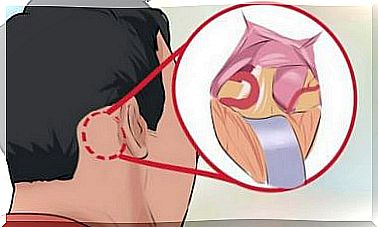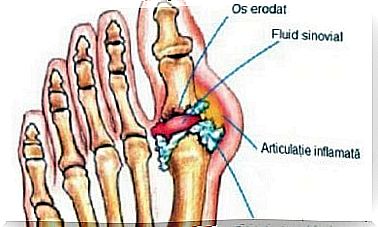Seafood Allergy: Symptoms And Treatments

Seafood allergy is one of the most common types of allergies. Molluscs and crustaceans can easily cause the immune system to overreact to fight the allergen, resulting in mild to severe reactions. Severe allergic reactions can be extremely dangerous, so it is important to understand the symptoms to avoid major health complications.
When a substance enters the body, the immune system decides whether to fight it or let it pass. In the case of seafood allergies, the immune system identifies their proteins as harmful and reacts to protect the body. Sometimes these reactions can evolve in such a serious way that they can be life threatening.
What is seafood allergy?
As a study in Current Opinion in Allergy and Clinical Immunology mentions , seafood allergies are caused by specific proteins found in certain marine life. The most common seafood generating allergies are crustaceans and mollusks.
Once the body detects an allergen, it triggers a defense reaction that can lead to mild symptoms, such as hives or swelling, or more severe symptoms, such as anaphylaxis.
A family history of seafood allergies is one of the most important risk factors. In addition, this type of allergy is more common in adults than in children, although it can occur at any stage of life. Moreover, sensitivity to seafood is more common in women than in men.

Seafood allergy: symptoms
As mentioned earlier, allergic symptoms can be mild or severe. Generally, the first signs of an allergic reaction appear about an hour after eating seafood. Typical symptoms are swelling and itching of the lips and / or tongue.
In more severe cases, you may have difficulty breathing or have intestinal problems, such as diarrhea, stomach pain, and vomiting. This type of reaction usually requires medication and the administration of a probiotic that can control persistent diarrhea.
Other symptoms may occur, such as dizziness, fainting, or loss of consciousness. If you experience any of these signs, seek medical attention immediately to monitor the progress of the reaction and receive medication if necessary.
Anaphylaxis or anaphylactic shock
Seafood allergies can lead to anaphylaxis, a life-threatening side effect that requires immediate medical attention. In fact, adrenaline injections are the first and most important treatment option, as confirmed by a study published in the Journal of Pediatrics.
Symptoms of anaphylaxis include difficulty breathing due to swelling of the throat, low blood pressure, confusion, dizziness, fainting or loss of consciousness.
What are the possible complications?
There are certain pre-existing conditions that can dramatically increase a person’s susceptibility to anaphylactic shock. For example, if a person has asthma, a family history of anaphylaxis caused by food allergies, or a personal history of allergic reactions to seafood, there is a high likelihood that hypersensitivity will be complicated.
Because of this, it is extremely important to carefully examine the labels of all the foods you buy. This way, you can make sure that there are no cross-contaminations or traces of food that could trigger an allergic reaction.
If you have severe seafood allergies, you should stay away from any place where seafood is processed and cooked. Smells or fumes from cooked seafood can trigger side effects.
Seafood allergy: treatments
There is currently no cure for seafood allergies. This food allergy is a process that, once it occurs, will most likely last the rest of your life.
Consequently, the only thing you can really do is try to avoid ingesting seafood and inhaling the smoke from cooking it. Of course, this only applies if you already have a confirmed allergy to seafood.
If you go to the restaurant, check if the menu has a table or a list of allergens. Using this list, you will be able to see which dishes contain seafood and which do not.
Read food labels carefully to see if they have been packaged or processed in a seafood factory. It is very likely that the food contains traces of seafood, which can be dangerous.
Seafood allergy in children
As already mentioned, it is more common to develop an allergy to seafood in adulthood than in childhood. If you notice any negative reaction in the child after consuming seafood, we recommend that you have an injection of epinephrine in the form of a pen for emergencies. This could help save the child’s life by preventing anaphylactic shock.
Parents and teachers must be very careful with their children’s nutrition. If the little ones show symptoms of hypersensitivity for the first time, such as swelling, itching or inflammation of the mouth, it is best to take him to the emergency room.
How to prevent allergic reactions to seafood

As you have learned, seafood allergies can be life-threatening if the affected person does not take precautions. For this reason, it is important to always read food labels and seek immediate medical attention if you think you have an allergic reaction.
If your fears are confirmed, don’t forget to always have an epinephrine injection on hand. This is also important for parents and teachers of children with seafood allergies, who need to take special precautions to ensure that the little one stays away from possible allergens.









